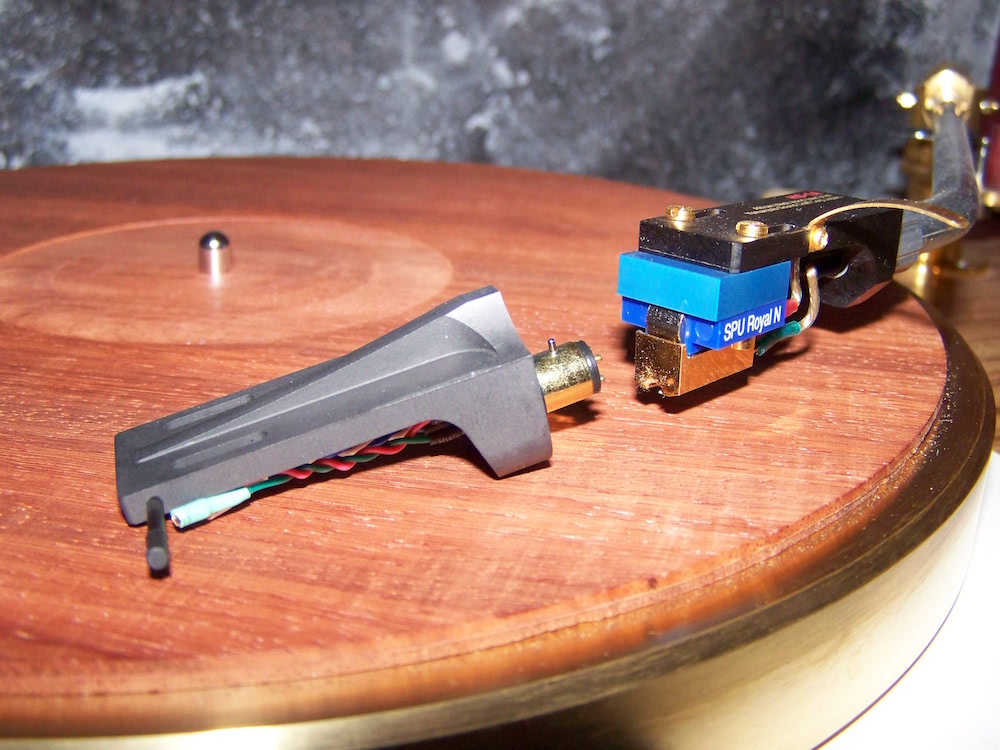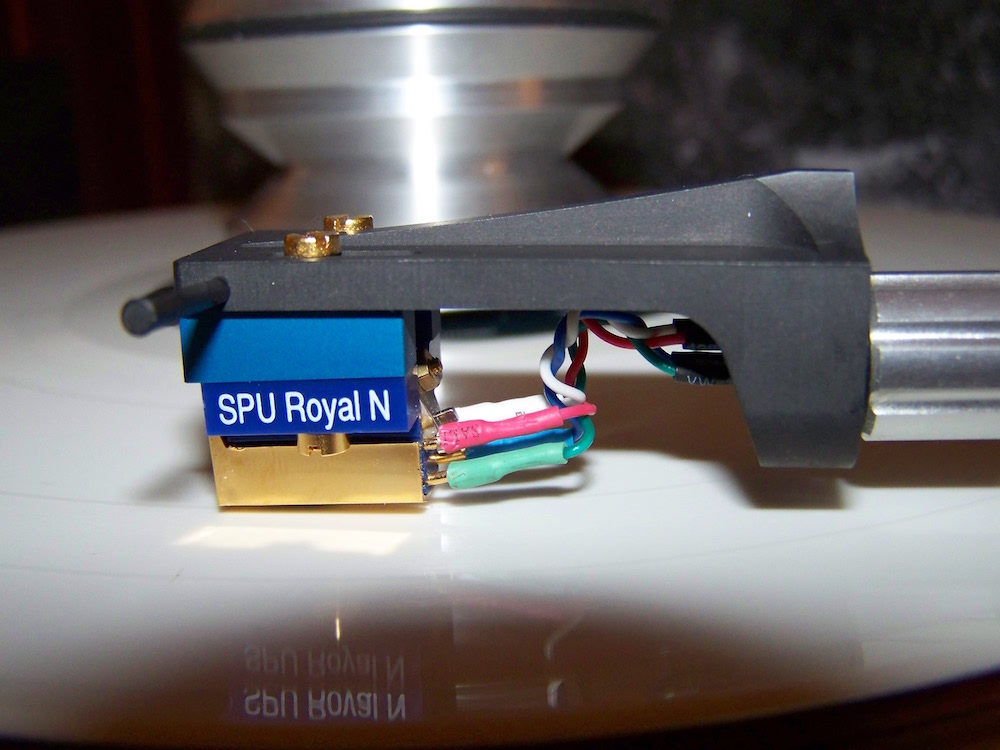Schick graphite headshell
During ETF 15 in Denmark I spoke with Thomas Schick while enjoying some good ruby port. During that conversation I asked
him for the qualities of his graphite headshell. Of course I read all about it on his website, but during this conversation I got really interested and decided to buy one.
Description of the head shell on Thomas' website is straight forward but kinda marginal:
With the headshells you can tune the sound of your turntable in a very easy way. The family of materials is graphite, but just as wood or plastic, it comes in many variants. I have chosen a high density type, that is also oil soaked. No, I have not done it so as to get their hands dirty. It is of course finished so you can touch it without pencil marks on your fingers. With this type I gained the most favourable sound results. The sound is very detailed, but keeps the right timing and timbre. A real good match for top MC systems. The design results in an extremely rigid and resonance-free headshell, which basically ensures an extended precision in sound.Whilst being clear about choice in material and effect on soundquality, it made me wonder what the difference would be compared to my Yamamoto HS-1A.

Schick ready to be mounted.
Wooden headshells.
I do like wood, not only for aesthetics but as well for the influence it has on sound. Whether you use it as enclosure or as decoupling devices, it has
effect on sound. Wood has the ability to transport vibrations when used right and to control tone (or coloration). Many high-end suppliers, both
equipment and parts, use it abundantly. I do as well..
I while ago I owned a Denon DL103 for which Uwe made a replacement body out of ebony. This worked out very well compared to the original plastic body. At
that time Yamamoto was one of the first to present a wooden headshell out of African blackwood so I bought one and it performs very well. Nowadays many
are available in all sorts of wood. Uwe makes them as well as Ortofon does and so do many more.
So in the end I basically compared graphite to African blackwood.
More information..
But first some more information that I got from Thomas. Production of the headshell is a bitch. Graphite is a crystalline form of carbon so it conducts
electricity. Graphite has anisotrophic properties, meaning that it is directionally dependent. So a block of graphite can only be used "one way".
Also graphite particals are dust-like, often used as lubricant, making the milling process even more difficult. And ontop of that, graphite dust combusts easily..
So despite the fact that milling graphite itself is not a problem, it adds demands to the milling environment.
So the biggest challenge was finding a company willing to mill graphite. Once that was sorted out, the first prototypes were made which in the end led to
using oil soaked dense graphite. Dense because of ease in milling and oil-soaked to get rid of high frequency resonances which resulted in unpleasant sibilant
highs. Also the oil dries resin like, sort of insulating the graphite which takes care of dirty fingers as well.
Shaping the headshell resulted in a ridge ontop of the headshell, I guess that it makes it sturdier and less fragile during milling as well providing rigidness.
The result must be a costly manufacturing process which obviously has its reflection on the price. Weight is rather high at 15.4 grams which suits most modern
MC-cartridges.
So, how does it perform?

Schick and SPU.. compared to the above picture clearly better cartridge to headshell contact.
An impression.
Together with a friend we first listened to several tracks using the Yamamoto/SPU combo before switching to Schick/SPU.
Mounting the SPU Royal N was easy. I carefully tightened the screws not to damage the graphite, as Thomas said. The Schick is slightly longer then the Yamamoto,
which in my case resulted in being able to increase contact surface between cartridge (spacer) and headshell. Schick's headshell wires looks like good quality
with one remark: I had to squeeze the connectors since the SPU receptables are smaller in diameter. The African blackwood headshell has more height, so I had
to adjust VTA as well. The increased headshell weight also meant readjustment in tracking force. Once this was all done, we listened again to the same tracks
as we did before.
The influence of the Schick is clear and not subtle. It is totally different from the Yamamoto. Where the Yamamoto has a full bodied tone in lower frequencies,
the Schick has a more proportional base. This contributes to more detailed highs and adds to imaging. So overall the Schick has more resolution and a tighter base.
The Yamamoto excells in tone and manages to give more body to almost everything but with less resolution. I would say that this could be matched to personal
taste and maybe even paired with certain music genres. I can imagine people having preference for jazz or classical will favor the Yamamoto. My musical
taste however reflects rock (60's/70's), pop (70's/80's and indy), jazz and classical, so I have a preference for the Schick's neutralness.
Some information about Uwe products can be found here.
